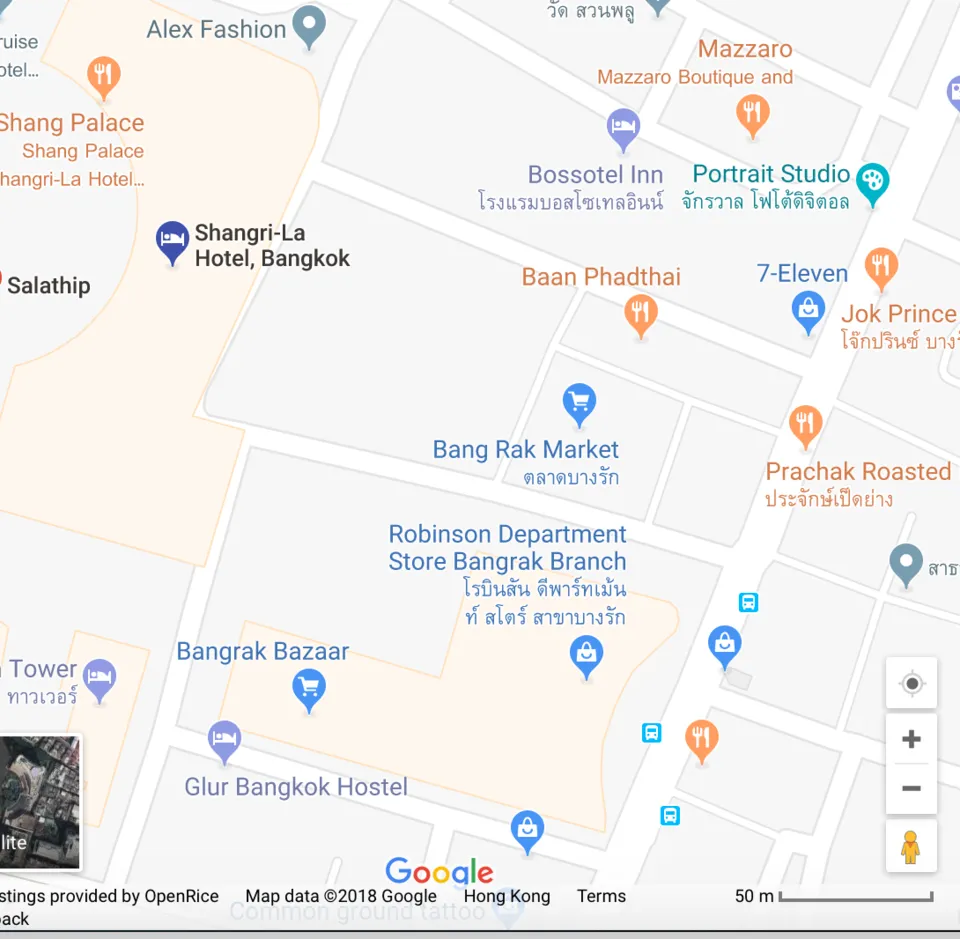Continuing from part 1 of the cooking lesson, click here, if you haven't read it.
The cooking lesson that morning had three students (2 ladies and me), Chef Narain briefed us about dishes we would be cooking and a wet market tour. The wet market (Bang Rak market) is across the river and adjacent to hotel Shangri-La
In Thai language, Chef Narain told us that Bang means 'river' and Bang Rak market is a wet market along the river chao phraya.
I was excited and expecting the wet market tour, it would have not been possible without Chef Narain. How an outsider can find a local wet market like that without local guidance? The tour was about 1 hour long and my eyes were wide open. Chef Narain gave us an insightful and interesting lecture about the local culture and how it has been affecting local eating habits. Herbs and spices are essential to Thai cooking and the local is very attentive to selecting a right spice or herb for a cuisine. Basil, there are three types of basil, sweet, lemon, and holy. But we outsiders may call all varieties Thai basil.
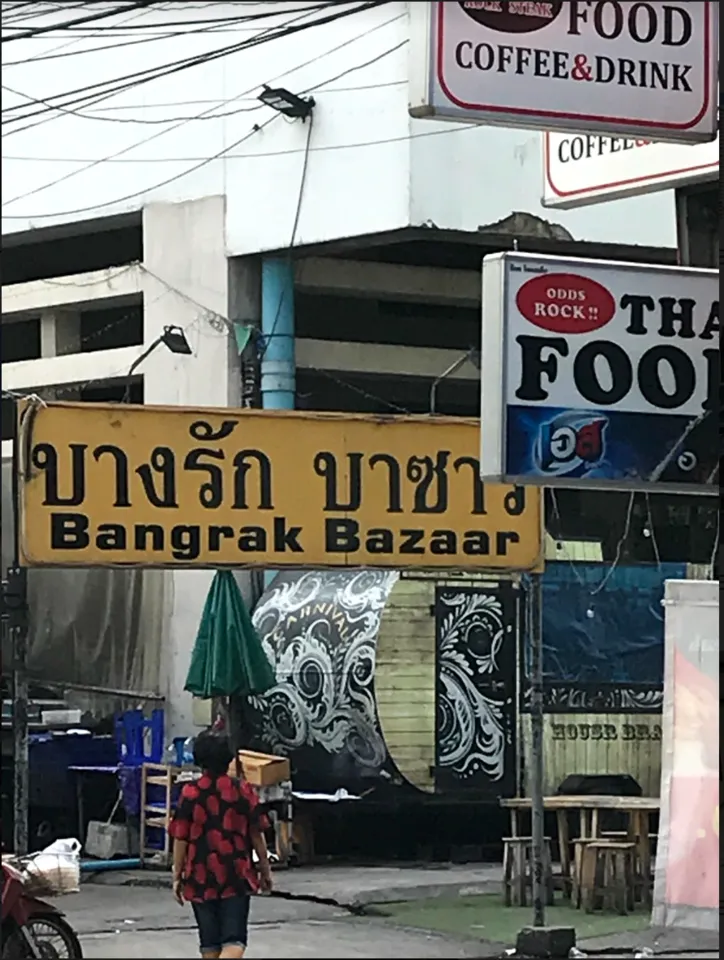
Rak is love and Bankrak = a river full of love.
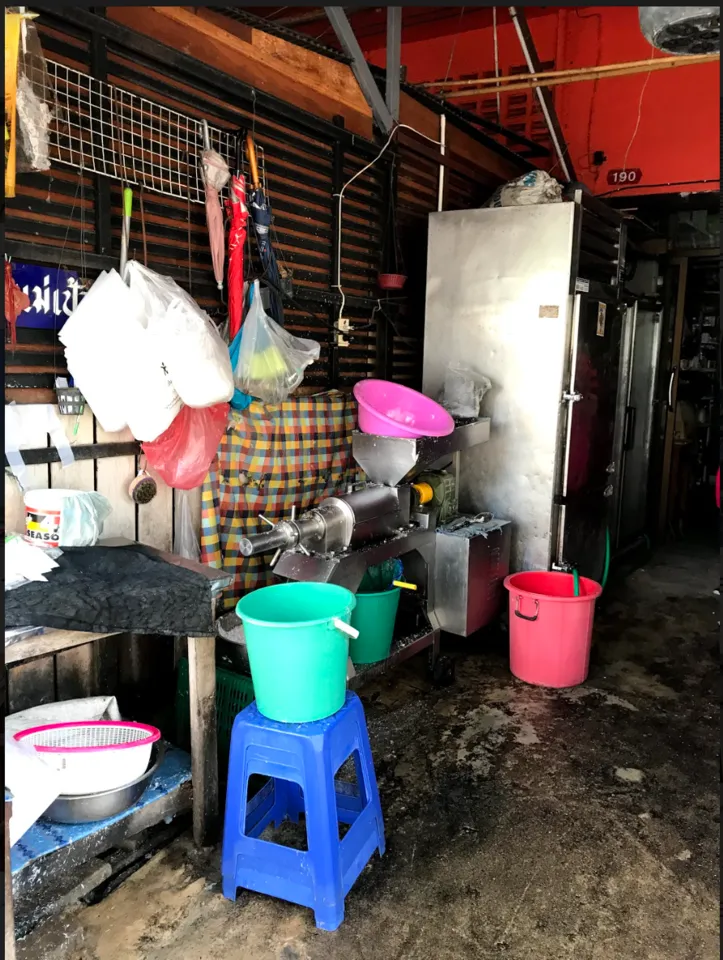
This is where a small factory producing coconut products is located
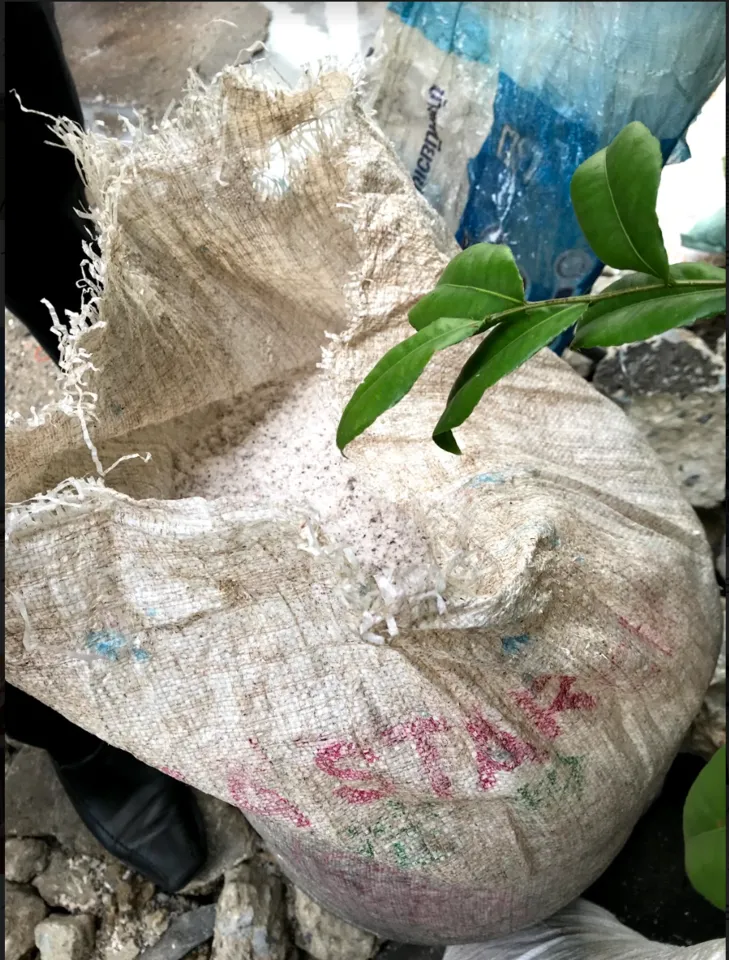
A by-product from young coconuts. The flakes can be used over food steaming to release the aroma of coconut.
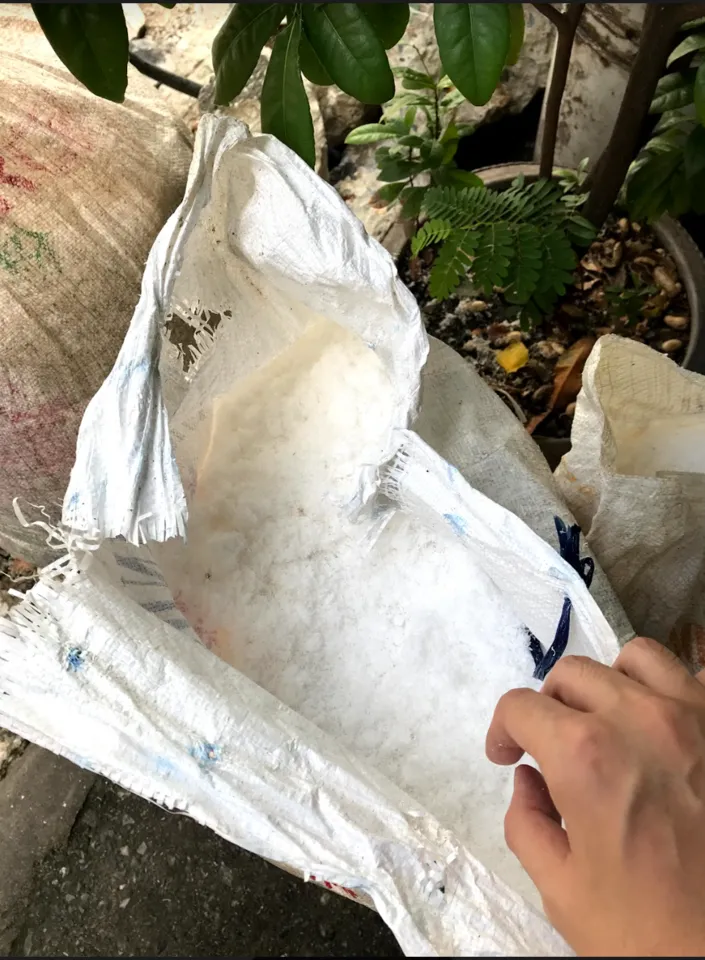
A by-product from mature coconuts. Coconut flesh change colours from white to brown.
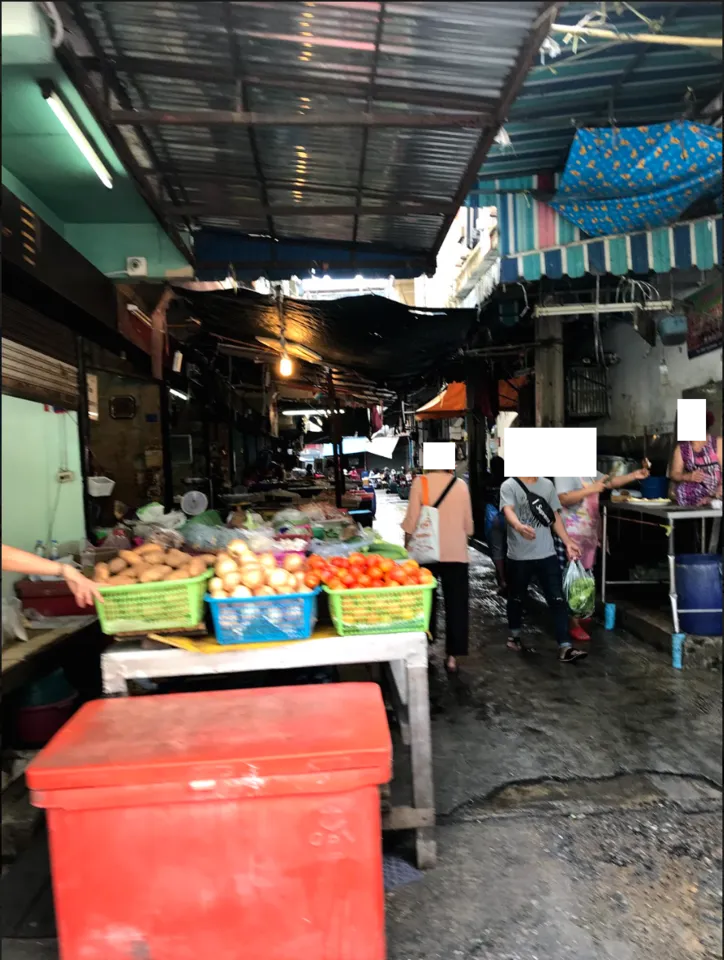
Entrance to the wet market. Never mind the wetness or the unorganised scene, poultry or seafood you can buy at a up-scale supermarket in Bangkok is probably from the same origin.
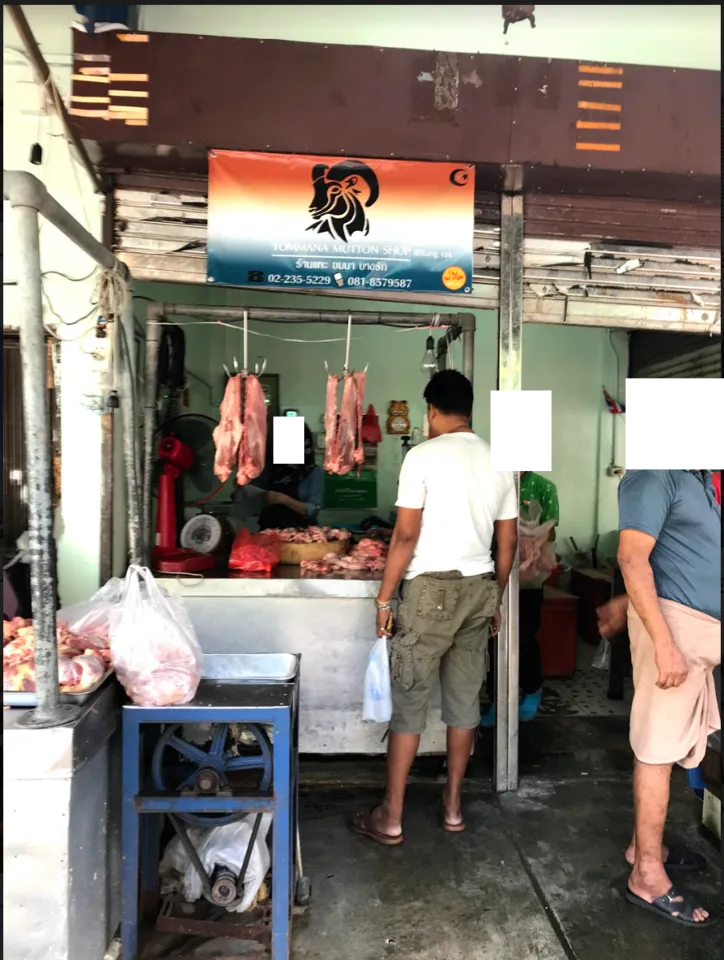
People in Thailand prefer seafood, chicken and pork to beef. It is all about religion where beef may be considered as a being to be spiritually protected.
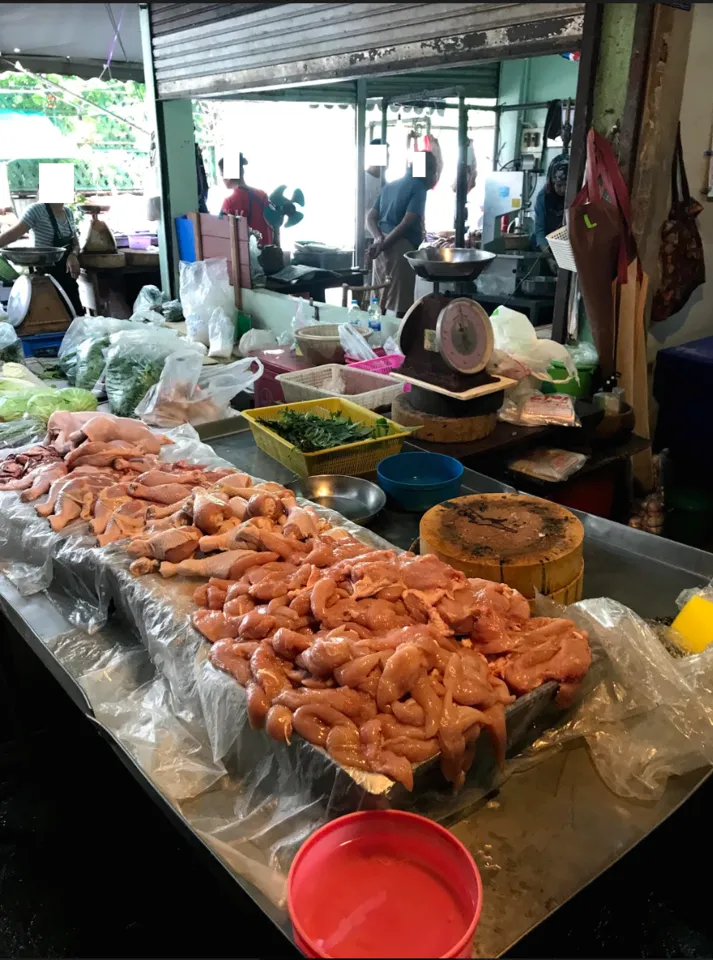
Fresh chicken, good for Thai chicken curry

Ready-made curry paste. But you can make your Thai curry from scratch, really easy to make. Fish sauce, palm sugar, coriander roots, chillies, lemongrass, lemon leaves, and some curry paste
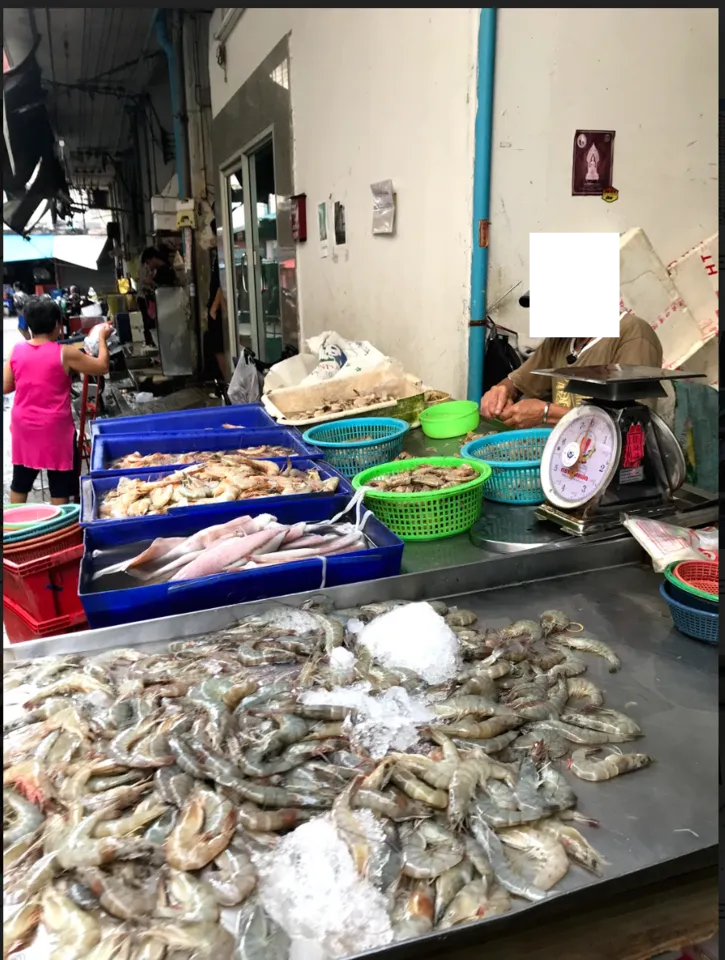
A stall selling seafood. Again, don't be discouraged by the organised scene. Up-scale supermarkets sell same seafood.
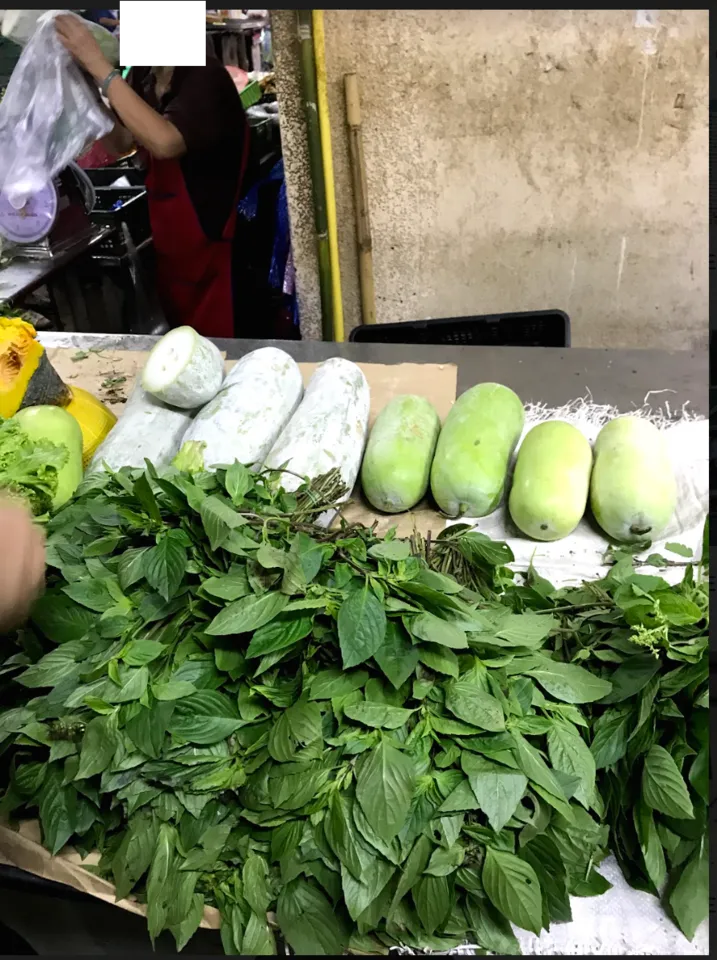
Different kinds of melon and sweet basil.
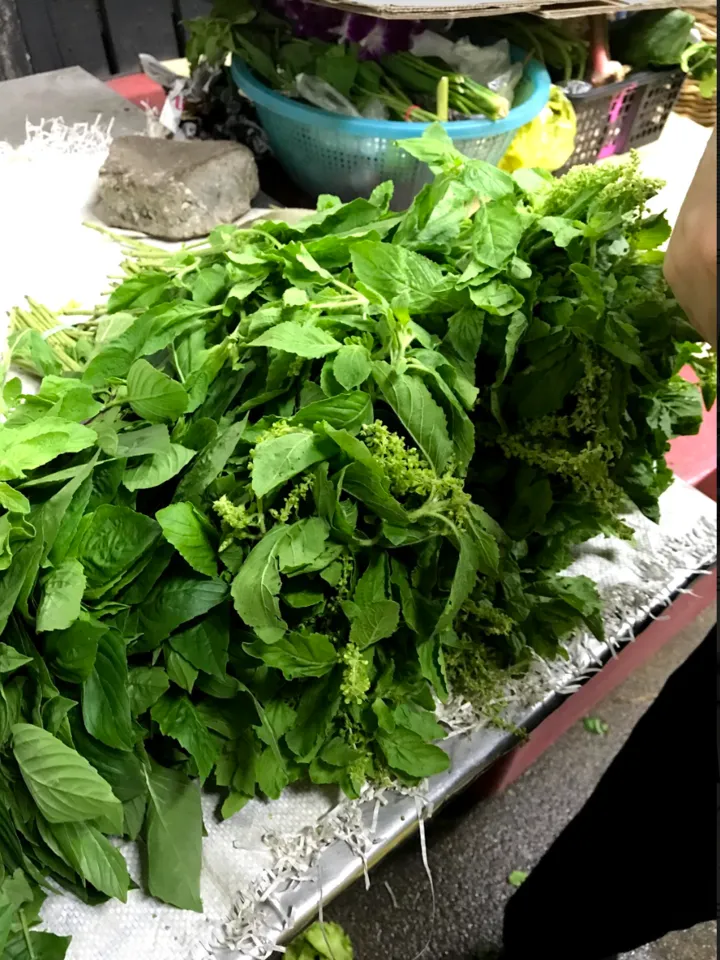
This is holy basil, if my memory is still serving me right
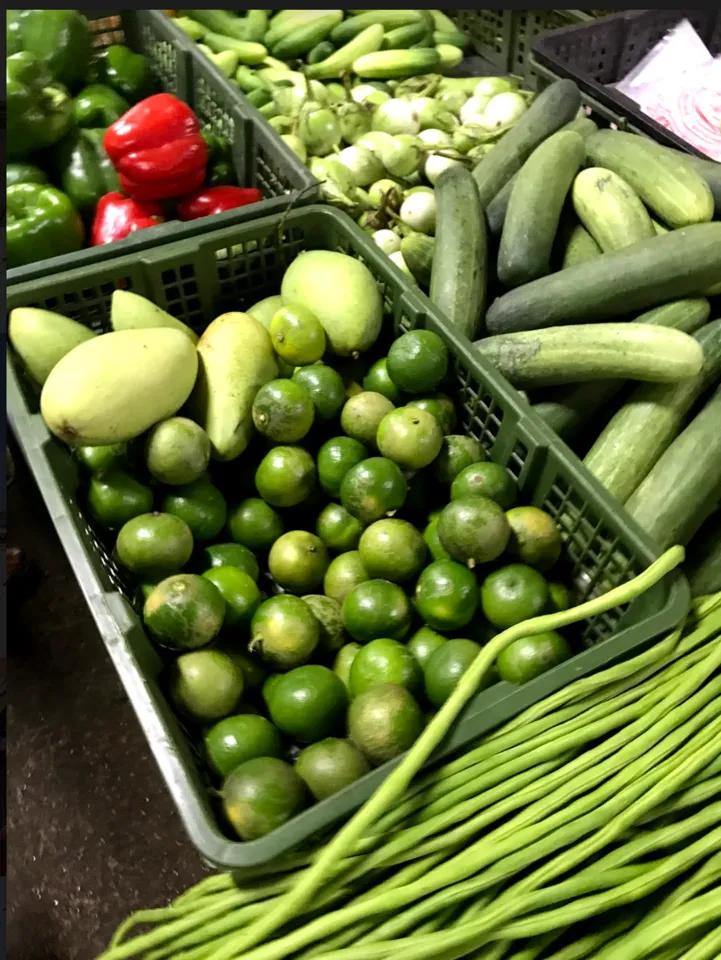
Limes. Lemons are too expensive in Thailand, they must be imported (the weather does not allow to grow lemons in Thailand) and limes as an alterative does a good job.
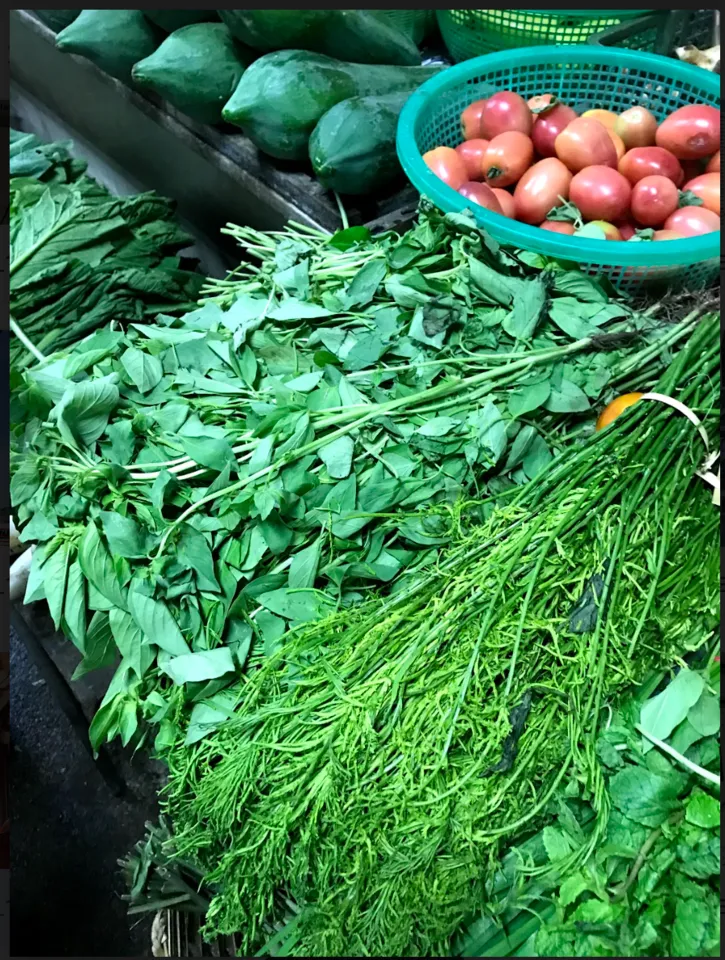
Cannot recall what they are
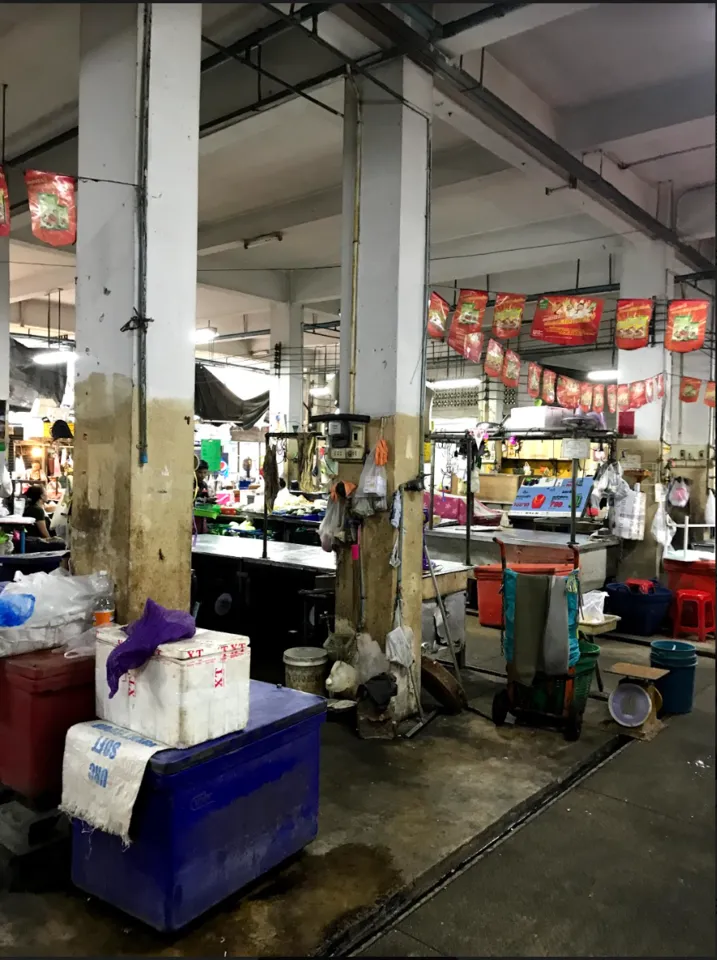
Most stalls are closed before 12:00. Not to miss how vibrant the wet market is, you may go there before 9:00, at which the wet market is full of
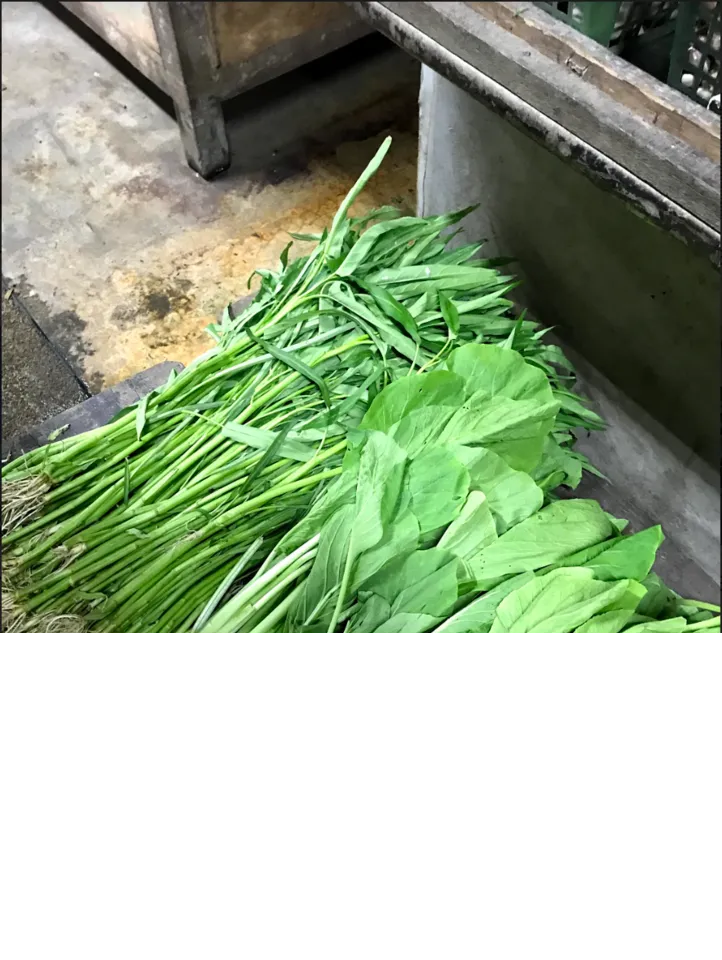
Thai morning glory. Hey, this is not that morning glory
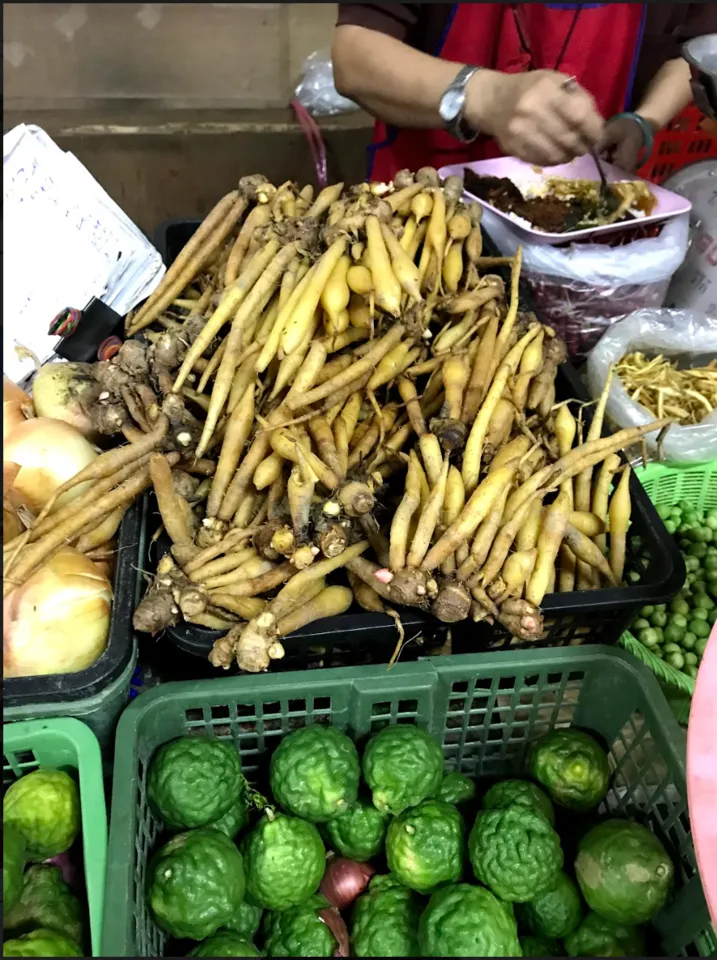
They are called key fingers because they look like small fingers and keys. They smell earthy.
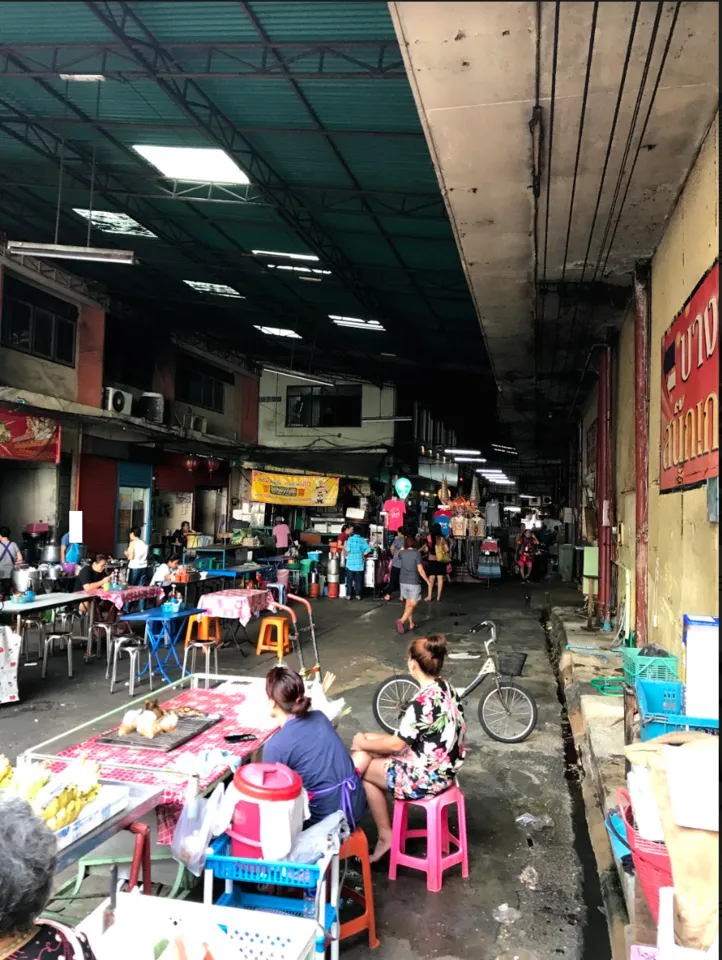
Walk deeper into the wetmarket and you will find another side of it where street food awaits you
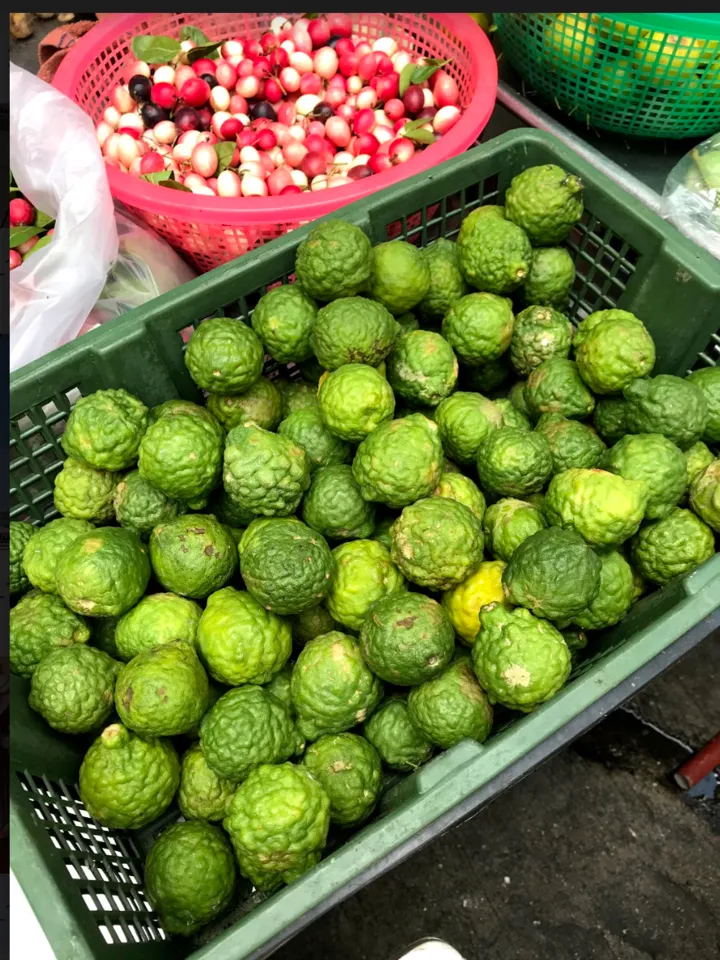
Kaffir limes. They are so fragrant and can be used as a natural soap. Leaves are used for cooking.

Cannot recall what it is. Perhaps something to enhance flavour.
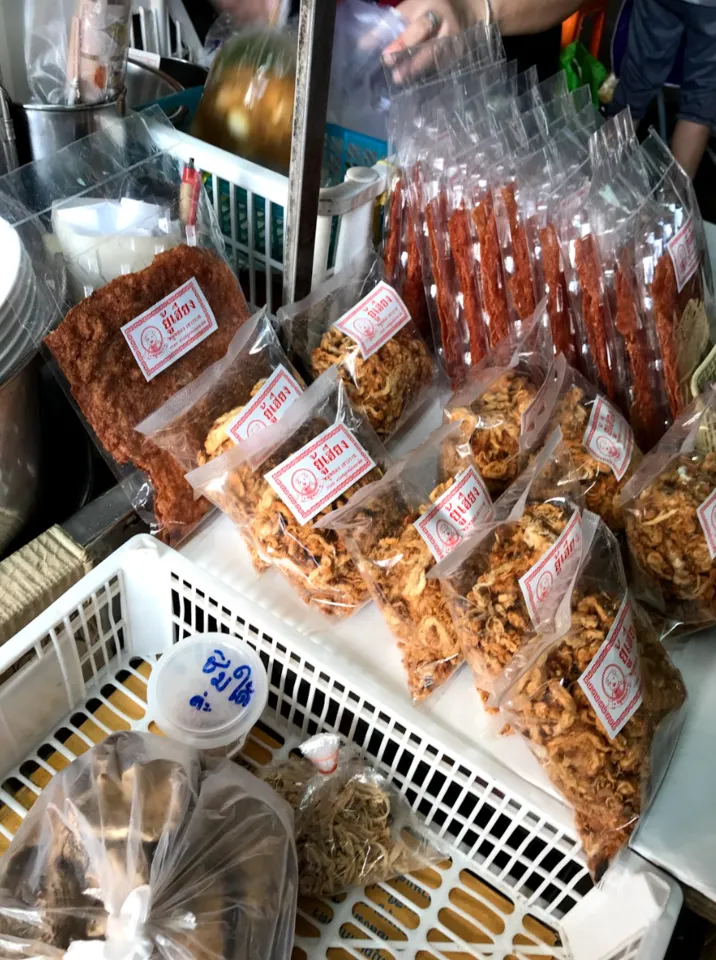
Pork jerkies and pork shreds
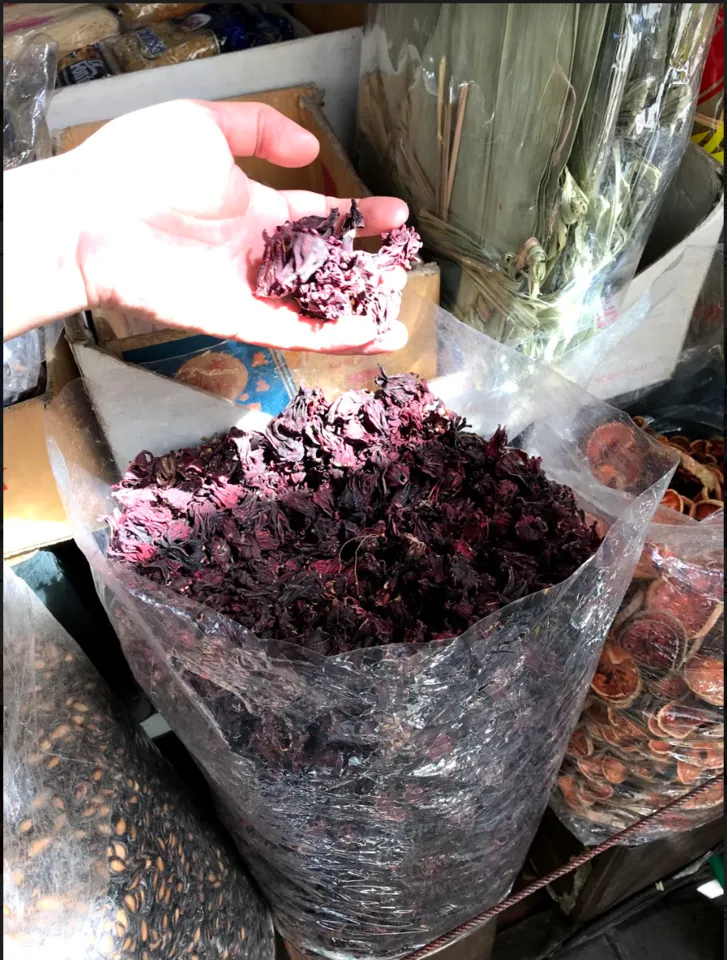
Hibiscus tea, a herbal tea with many benefits to offer
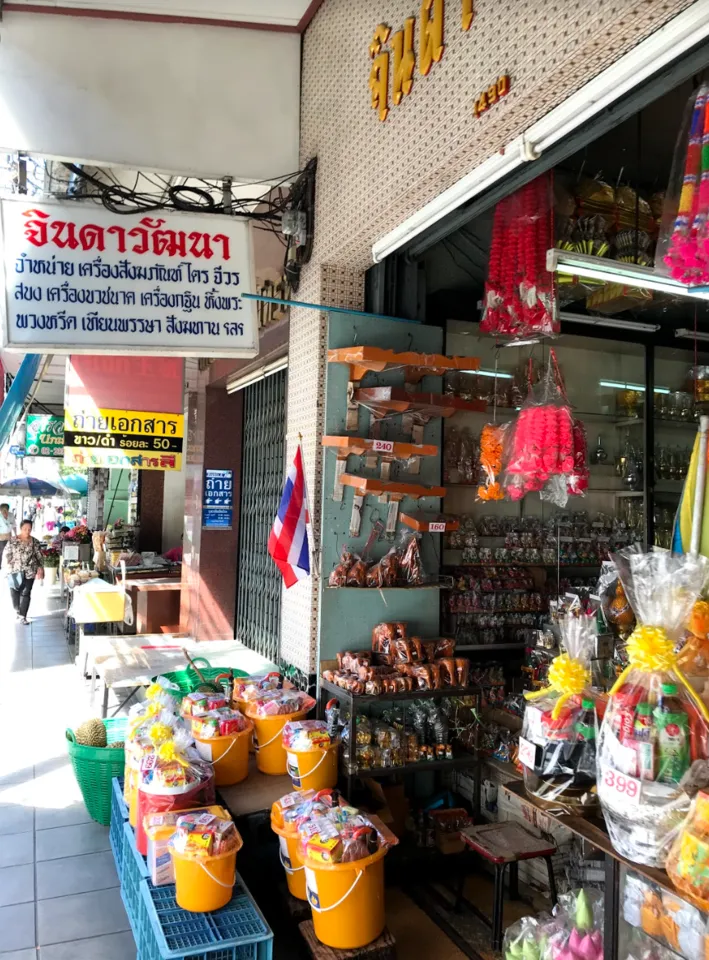
A shop that sells daily items to be donated to monks. Monks in Thailand as a holy signature cannot touch money. They cannot use money at all to buy even tiny daily items they need. The only way to have those things is receiving donations from believers.
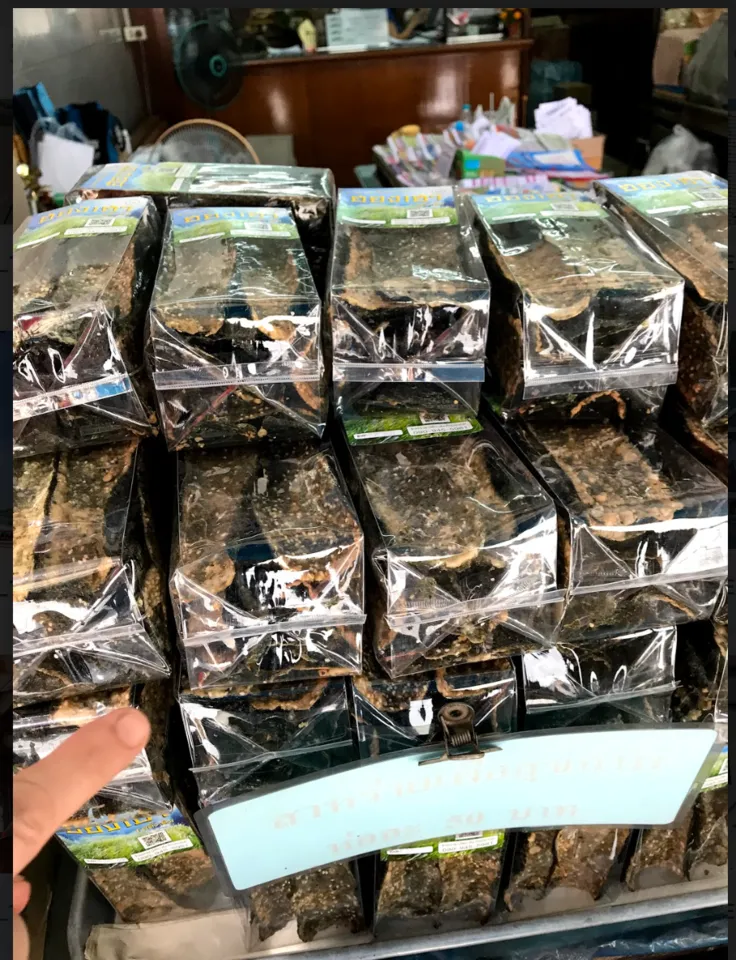
Sea weed products
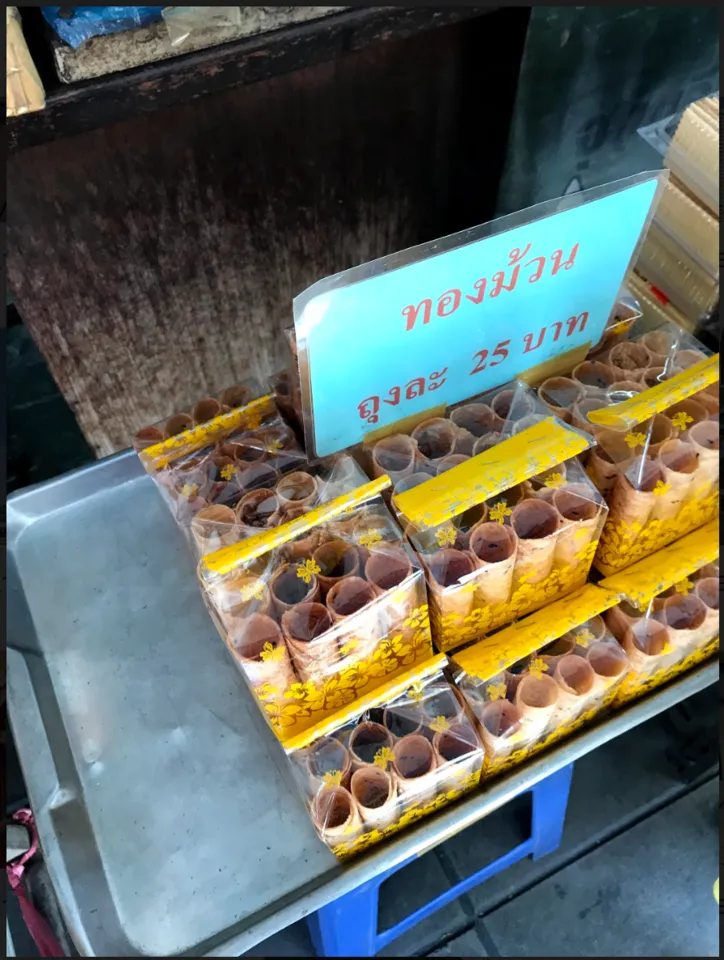
Crispy waffle rolls
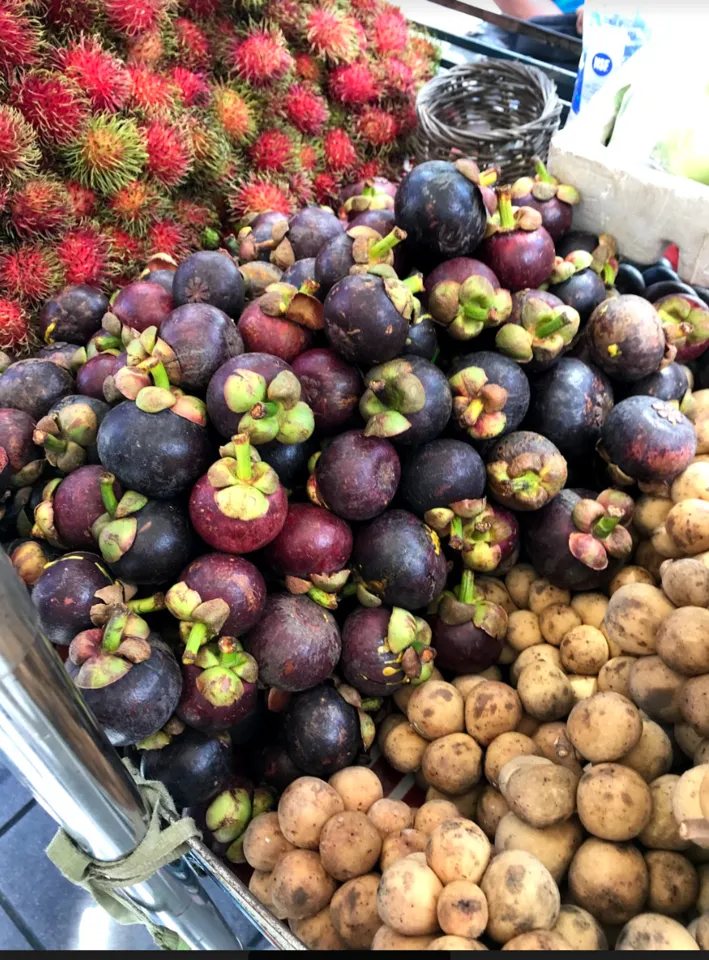
Tropical fruit, exotic!

Guavas, a hidden gem that has rich antioxidant agents
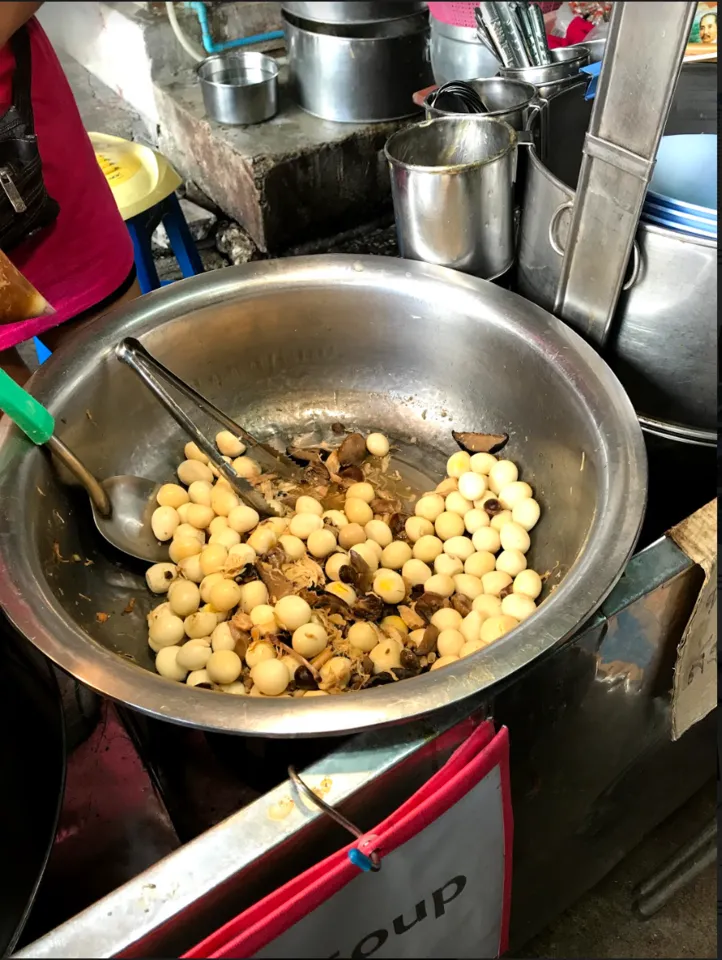
Quail eggs to be eaten with fish maw soup
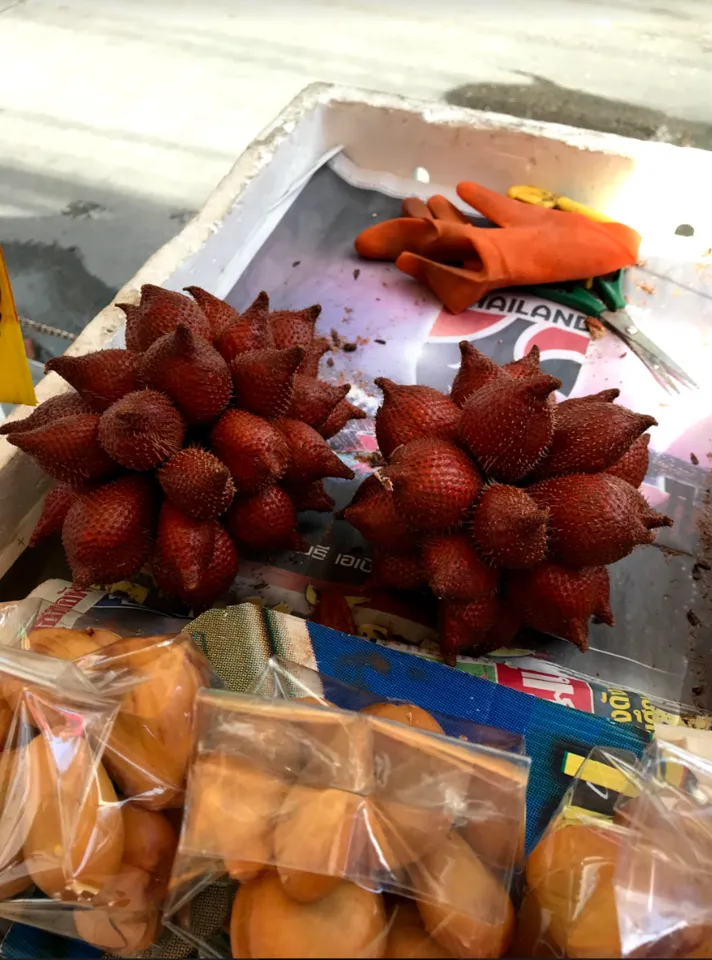
Another tropical fruit but I cannot remember the name. Spiky one.
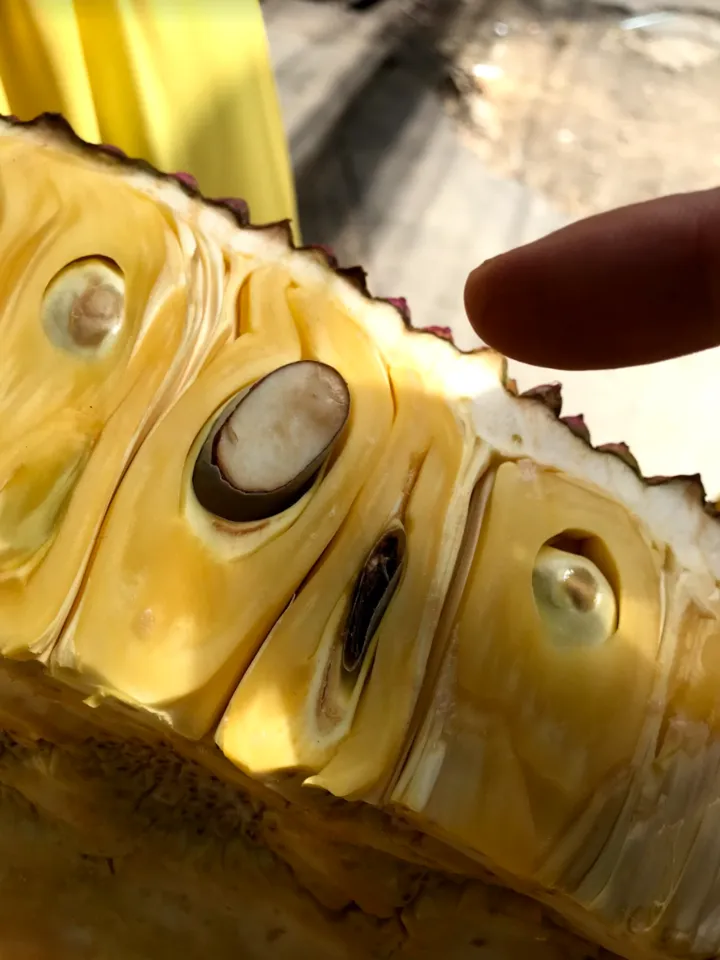
Stones of this fruit can be eaten.
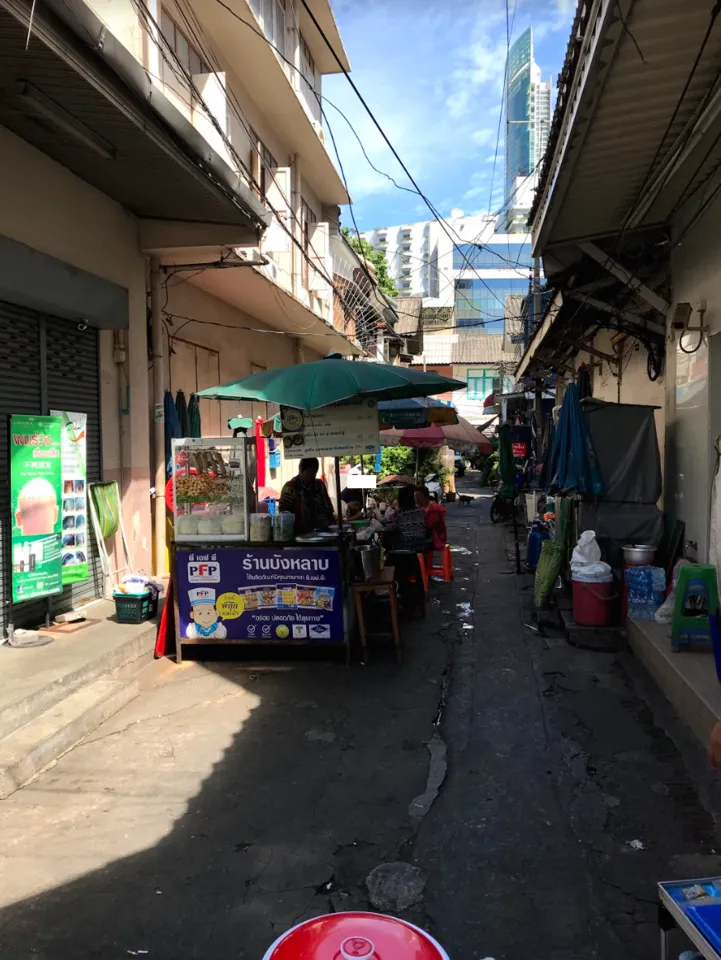
Street food is what makes Bangkok unique, don't miss any and give it a try.
